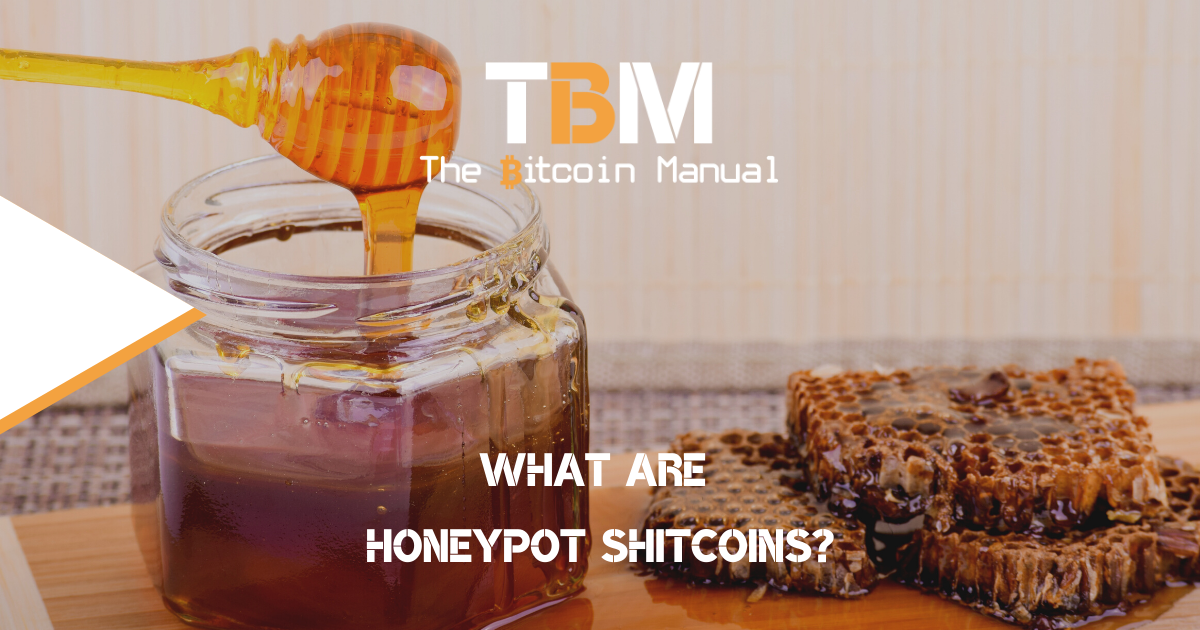As the value of bitcoin continues to rise, new investors may feel they’ve missed the bus; unit bias encourages them to look for something “cheaper”, which leads them down the path of alternative coins. Since buying one bitcoin seems out of the range of the average person, the idea of buying 1000, 10 000 or 100 000 tokens that promise to become the next bitcoin is a popular narrative.
The search for the “next bitcoin” eventually leads you to take more risk, as beating bitcoin’s returns even in the short term is not an easy achievement. This forces traders to look for more coins; with higher volatility and with increased volatility comes a high level of illiquidity. A pursuit that leads traders into the path of shitcoin honeypots that will eventually leave them penniless.
What are shitcoin honeypots?
A honeypot shitcoin gets its name from the idea that it’s a jar with a sticky substance inside, keeping you stuck without the ability to move. The honeypot shitcoin is a honey jar where your money gets stuck and can’t get out.
The basic idea is encouraging a user to purchase a coin with little to no buy orders, when you purchase the coin, you either have no one to sell it to or so few buy orders that you could never unroll from the number of coins you’ve purchased.
In fact, when you make the purchase in the honeypot coin, you’re the exit liquidity for others who got stuck or founders looking to turn their make-believe tokens into actual value.
How do honeypot shitcoins work?
Honeypot shitcoins are usually less evident to the inexperienced eye and, therefore, are more challenging to detect. Even people who operate with shitcoins daily can get caught in these zero value hodl positions, where they hodl a coin to zero.
Inexperienced traders are generally victims of honeypot shitcoins because they are momentum traders. They see a coin pumping and throw themselves like crazy without verifying everything first.
Getting caught in a FOMO purchase, they’ll hit the buy button without ever checking the history or market depth, and once they own the tokens, they realise there are no buy orders to sell into, and they are stuck with a worthless coin.
You can set limit orders and try to wait for a greater fool to take it off your hands, most likely at a discount, but in general, shitcoin honeypots are a zero-sum game, and you’ll have to take the zero on the chin.
Influencers and honeypot shitcoin compensation schemes
Honeypot shitcoiners can employ several tactics to sucker you into their trap. In many cases, it’s not very sophisticated; they may broker deals with influencers, giving them token positions in exchange for promotions. Once the influencer promotes the coin to their audience, the buy orders they encourage to become the exit liquidity that pays the influencer and allows the project owners to reduce their positions in their premine.
DEFI honeypots are very popular
DEFI has created an ecosystem where anonymous smart contract creators can spin up shitcoin honeypots in perpetuity. Naturally, they will require some seed capital, but the return on investment is often well worth it.
These DEFI shitcoin honeypots spin up a coin, get it listed on DEX’s and have an army of bots attached to multiple addresses. These bots place spoof trades, making it look like a healthy and distributed order book, attracting traders to their market.
While these bots wash trade, they’re also scooping up the sales of unsuspecting investors. As these investors wait for their exit price, they hold on, and when it comes time for the investors to start to exit, that entire bot-driven buy wall disappears, and individuals are left with a worthless coin.
Smart contract enforced shitcoin honeypots
In the DEFI market, where developers can issue contracts on-chain, it gets a little more sinister. What honeypot shitcoiners do is insert a piece of code into the contract that allows only their wallets to sell the coin. Everyone can buy, but scammers insert into the smart contract code a limited list of wallets that can sell the currency.
So what happens?
You pull up the data, and you only see different wallets buying, and you think this is another momentum trade. Seeing the bullish value of the coin due to the buying pressure, more people are encouraged to purchase.
The value goes up and up, and everyone seems pretty happy. Eventually, the coin reaches a price point where a trader would want to take profits.
You go to place the sell order, but it doesn’t process; you sell can’t because the contract says that no one, except specific wallets ( the scammer ones), can sell. Your money is trapped forever, and there is nothing you can do about it.
However, the scammer can remove it at any time.
Some of these scams last for days or weeks, and people believe they have found a real jewel of a coin that goes to the moon and will continue shopping.
Regulated exchanges are not immune from honeypots
If you think honeypot tokens are only in the DEFI part of the market and sticking with centralised KYC exchanges is a safe bet. You’re sadly mistaken.
The exchange game is about getting users in, keeping users trading as long as possible as much as possible. To do that, centralised exchanges compete in a race to the bottom in listing riskier and risker coins. The vetting process lowers its standards as exchange fees start to dry up, and if projects have the startup capital, they can easily buy a listing.
Novice coin buyers also have no idea how a market works; they’re not looking at order books or market depth. They’re spot buyers and have no idea that there needs to be exit liquidity and will take up positions in coins they cannot exit.
Eventually, exchanges delist the trading pairs or even the entire coin if there is no liquidity coming in and if it’s not worth market making themselves.
They will leave users stuck with a token they cannot sell; no hard feelings, it’s only business.
Stay clear of sticky situations
Shitcoin scams come in all shapes and sizes, and while you may think you’re too smart to fall for the obvious ones, the shitcoin market will constantly generate new narratives to test your resolve. I’ve seen the slippery slope of justification of dipping into the shitcoin trades and I’ve been there myself.
The entire gimmick is perpetuated by the founders, bag holders, and influencers all telling you anything that they feel will get you to stick around.
The longer you stick around holding and continue adding to their position, the more exit liquidity they have to use and go on to scoop up bitcoin.
Once you realise every shitcoin is a game of musical chairs where the founders and those with access to the code base to give themselves a favourable advantage over you, you’ll understand that these trades are not worth the risk.

Have you fallen into a shitcoin honeypot?
We’re not here to judge trust me, many of us who are now bitcoin maximalists fell for one or other shitcoin scam. If you’ve been caught in one recently, let us know, what was the experience like, leave your moment of clarity in the comments below.
Don’t feel embarrassed, your experience might help wake up others.




